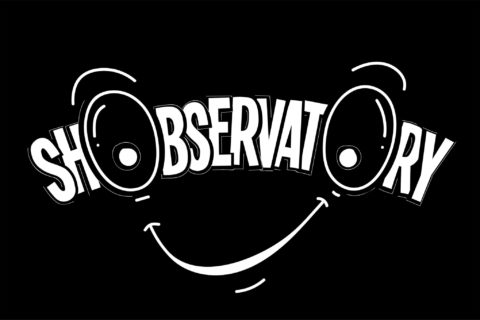Why do Face-to-Face Research?
If digital technology has made it so easy to go online, effortlessly cross borders and engage in dialogue from a distance – be it in written/ spoken form, or using digital images/videos – then why search remote mountain villages of say France and Germany just to interview people who own coal heaters? Why conduct Face-to-Face (F2F) interviews with Millennial techies to find out how important human relations are in their decision making? Why continue being physically present with an individual?
1. Because Digital and Analog don’t speak the same language:
Digital investigation usually captures what I will refer to as “level 1” language: declarative statements that express opinions and emotions inherited from our family, religious, social, generational and cultural determinisms that are largely shaped by the media. This language is therefore less superficial than conventional. It conveys acquired thoughts, beliefs and feelings. The needs, expectations and insights it reveals reflect the times.
F2F investigation enables access to “level 2” language: the language of implicit, unconscious thoughts, beliefs and feelings. Neuroscience has confirmed this:
“We are very influenced by completely automatic mechanisms that we have no control over, and that we don’t know.” [i]
In F2F, the techniques of free association of ideas, mental imagery, as well as projective and creative techniques, enable us to access this implicit content.
For example: A new coffee machine compared to existing machines that is perceived on ‘level 1’ as compact, convenient and seemingly perfect. However, at ‘level 2’ (using projective techniques) the design suggests the image of an owner who is “sad, withdrawn, and who doesn’t appreciate good coffee.”
2. Because F2F has its specific advantages:
Implicit body language: The presence of another person helps connect verbal language and body language and thereby verify the veracity of what is being said [ii].’’ Body language reveals implicit thoughts and true feelings’’. For instance, when a study to assess new bottle caps receives largely favorable comments but which are contradicted by the clenched hands that accompany them.
Some categories need hapticity to gauge authentic reactions. E.g. in jewelry research, where we discovered in concept testing that consumers needed to feel, hold, place new bracelets, armbands, etc. in order to give an honest sense of their likes and dislikes [iii].
Social reality, authenticity: F2F allows us to meet people in their natural environment and social context – at home, on the road, shopping, watching TV, etc. which maximizes participant engagement and lowers the risk of “improbable” participants: countering fakes, ensuring no-filter insights.
Example: in an ethnographic study, a participant claimed that she mainly watched TV documentaries on public channels. Her partner, who joined her, contradicted this, as did her mother who was making coffee in the kitchen. The three of them regularly enjoyed watched soap operas.
As Apple CEO Tim Cook put it: ‘’there’s nothing stronger than human relationships” [iv].
Imagination, innovation: real life and analog interactions help us surface and exploit contradictions – to discover something new [v].
Dynamic and projective interview techniques for groups or individuals liberate each person’s creative abilities, help us detect new needs and generate/express new concepts, new insights, new recipes, etc.
Similarly in workshops, both with consumers and clients: in-person group dynamics help stimulate each person’s creative imagination to produce new ideas. An example: in a co-creation session participants were challenged to come up with dairy dessert ideas: motivating new recipes were re-imagined by combining actual flavors, ingredients, textures, colors, and materials; new pack concepts were developed by combining real materials, colors and visuals; new propositions generated by fusing insights, definitions, claims, reasons-to-believe, etc.
3.The complementarity between digital and F2F:
Digital tools such as online focus groups, bulletin boards, MROC’s, mobile ethnographies, quick polls, blogs contribute at a rational level, deliver agility, and efficiency to F2F methods – but primarily on the level of human behavior.
Using a range of F2F techniques including extended and expanded group discussions, ethnographic approaches, co-creation workshops, sensory methods, story-telling, etc. F2F participants open up; unplanned reactions are triggered – leading to the unexpected, occasionally revelatory finding.
In F2F we obtain more private feelings, more sensitivity, and the creative freedom which are the only true ways to reveal consumers implicit expectations and the conditions for change.
Digilogue
By integrating digital techniques and talking both “level 1” and “level 2” languages, qualitative research becomes the invaluable complement to fully understanding consumers’ personalities, sensitivities, and private relationships, and considering all their true needs and wants.
To quote Adam Mosseri, Head of Instagram : ’’I don’t think you need to choose between algorithms and humans. You need a combination of both to be effective” [vi]
The alliance of Digital and Qualitative , this hybridization of knowledge, or “digilogue”, is an opportunity for companies to be both agile and consumer-centric and thereby reinvent themselves in a way that is both efficient and innovative.
Bibliography:
Edward Appleton/ Monique Richter “Qualitative Forschung. Ethnographie im Aufwind”. Research & Results 01/ 2019
Georges Guelfand, ‚‘Qualitative research & Creativity‘‘. Editions EMS. 2015
[i] Daniel Kahneman, ‘’Thinking, fast and slow’’. Farrar, Straus and Giroux. 2011
[ii] Alan Jasanoff, ‘’How brain, body, and environment collaborate to make us What We Are’’. Nature Forbes, Wall Street Journal. 2018
[iii] Edward Appleton/ Monique Richter “Qualitative Forschung. Ethnographie im Aufwind”. Research & Results 01/ 2019
[iv] Tim Cook, Le Point Interview, n° 2455, 2019
[v] David Hofstadter et Emmanuel Sancler, ‘’ L’analogie, Coeur de la pensée’’. Odile Jacob, 2013.
[vi] Adam Mosseri, Le Point Interview, No 2458, 2019.



1 comment
Very interesting and good article, well done!
(Apart from ‘digilogue’, that is )